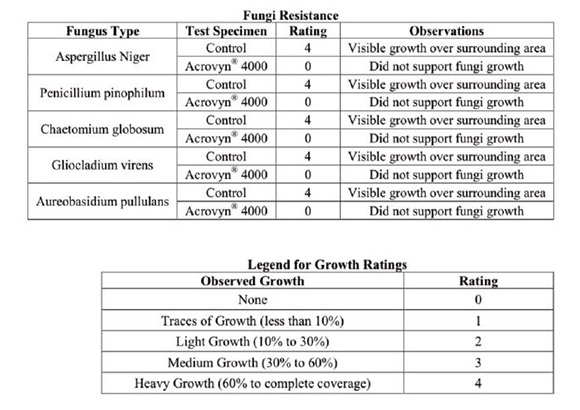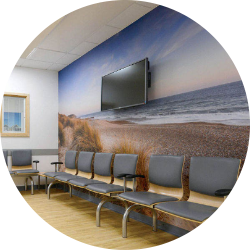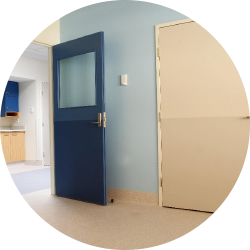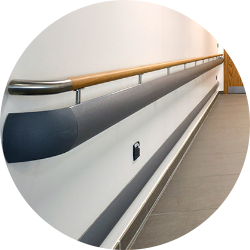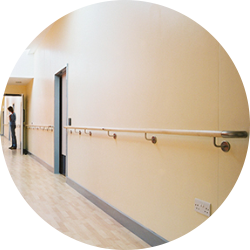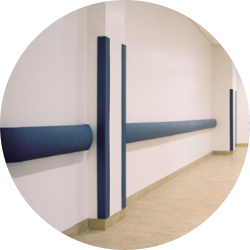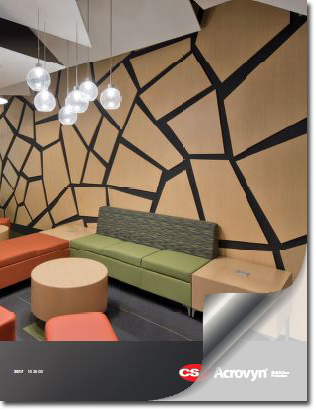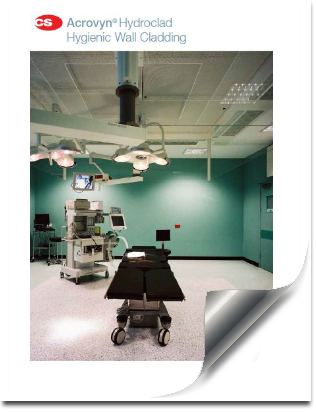STOPPING THE SPREAD: choosing the right interior surfaces can help prevent the spread of bacteria & viruses
Bacteria and viruses can live on surfaces for significant periods of time, making it easy for them to enter new hosts. Some surfaces are more resistant to microorganisms than others, meaning that architects and interior designers should give careful consideration to product selections for public interiors, especially in light of the global Coronavirus Pandemic. Acrovyn is a surface material that’s been utilized by the healthcare industry for decades due to its bacterial resistance properties, and could play an increasingly important role going forward. Read on to discover more about Acrovyn.
THINK ABOUT THE SURFACES YOU TOUCH WHEN YOU’RE IN A PUBLIC ENVIRONMENT
Most public interiors contain the following fixtures: DOORS, HANDRAILS, WALLS, CRASH RAILS.
Shops, schools, universities, museums, cinemas, galleries etc., all contain these fixtures, and we don’t think twice about touching them or brushing up against them.
MAINTAINING STRICT HYGIENE LEVELS IN PUBLIC ENVIRONMENTS HAS NEVER BEEN MORE IMPORTANT
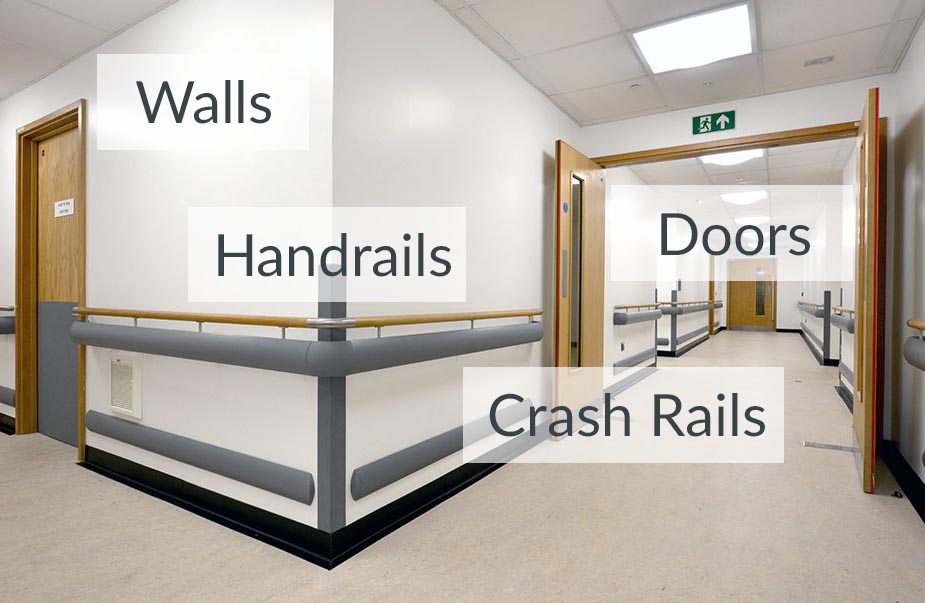

IMPORTANT CONSIDERATIONS FOR ARCHITECTS
&
INTERIOR DESIGNERS
_____________
Product selections at the specifying stage can determine the extent to which hygiene levels can be maintained once a public space is in use.
SOME SURFACES ARE MORE RESISTANT TO MICROORGANISMS THAN OTHERS. THIS IS WHERE ARCHITECTS, INTERIOR DESIGNERS & COMMERCIAL FIT-OUT PROFESSIONALS CAN PLAY AN IMPORTANT ROLE IN THE FIGHT AGAINST THE SPREAD OF HARMFUL CONTAGIONS.
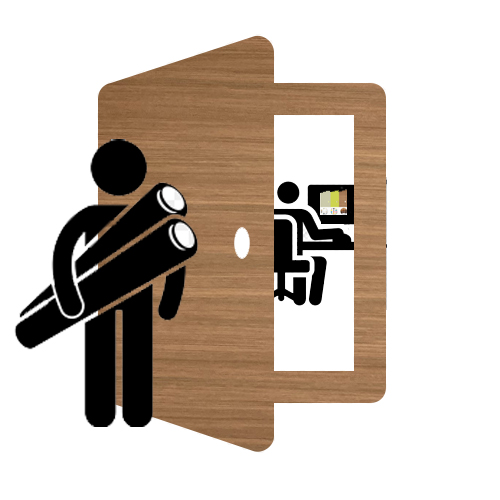
Acrovyn 4000 & Acrovyn Hydroclad are great examples of hygienic surfaces for public spaces! It’s for good reason that Acrovyn has been used extensively within healthcare settings for decades.
Acrovyn doesn’t harbour bacteria or fungi, and independent lab tests provide clear evidence of this. Acrovyn is available in several ranges with a whole array of colours and finishes to choose from, making it ideal for a broad range of commercial settings (not just healthcare and aged care). Acrovyn works just as effectively in retail, hospitality, sport & leisure, transportation and education sectors along with many other industries that serve public needs.
Acrovyn Hydroclad takes the hygiene factor to another level with its smooth surface and antibacterial additive throughout the sheet composition.
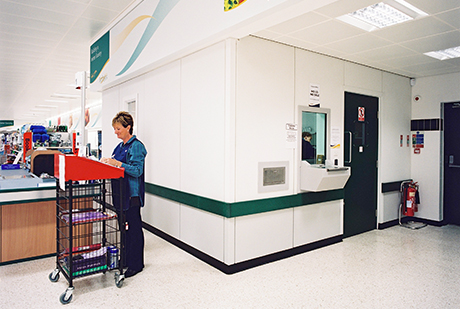
ACROVYN CAN BE CUT TO ANY SHAPE OR SIZE AND CAN BE APPLIED TO:
DOORS
WALLS
HANDRAILS
CRASH RAILS
CORNERS
KICK PLATES
PUSH PLATES
COLUMNS
DOOR FRAMES
ELEVATORS
Follow the Product Links to Find Out More:
ACROVYN’S RESISTANCE TO BACTERIA AND FUNGI
Acrovyn has been tested independently under controlled laboratory conditions. The results speak for themselves.
Independent Laboratory Testing
In 2010, Acrovyn 4000 samples were tested by Architectural Testing Inc in Pennsylvania for resistance to bacteria and fungi. The samples were tested according to ASTM G 22-76 (1996), Standard Practice for Determining Resistance of Plastics to Bacteria and ASTM G 21-96 (Reapproved 2002), Standard Practice for Determining Resistance of Synthetic Polymeric Materials to Fungi.
DOWNLOAD THE OFFICIAL DOCUMENTS
All curing, conditioning and testing were performed under standard laboratory conditions using Acrovyn 4000 samples 0.075″ thick by 2″ square.
TESTING FOR RESISTANCE TO BACTERIA & FUNGI
1) Resistance to Bacteria
Acrovyn 4000 samples were placed on a Nutrient Agar and inoculated with a suspension containing Pseudomonas Aeruginosa (ATCC No 13388).
Test specimens were incubated at 37°C and not less than 85% relative humidity for a period of 21 days.
RESULTS: The Acrovyn 4000 samples were observed under 40x magnification for their ability to support bacterial growth. The rating for this method is growth or no growth. The Acrovyn samples returned a result of no growth.
2) Resistance to Fungi
Acrovyn 4000 samples were placed on a Nutrient Agar and inoculated with a spore suspension containing Aspergillus niger (ATCC No. 9642), Penicillium pinophilum (ATCC No. 11797), Chaetomium globsum (ATCC No. 9642), Giliocladium virens (ATCC No 9645) and Aureobasidium pullulans (ATCC No 15233).
Test specimens were incubated at 37°C and not less than 85% relative humidity for a period of 28 days.
RESULTS: The Acrovyn 4000 samples were observed under 40x magnification for their ability to support fungal growth. The rating for this method is growth or no growth. The Acrovyn samples returned a result of no growth.
DETAILED RESULTS OF FUNGAL RESISTANCE TESTING:
